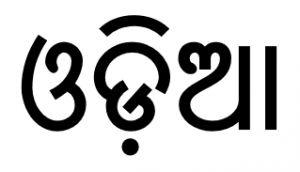Language/Odia/Grammar/Personal-Pronouns
| ◀️ Directions and Locations — Previous Lesson | Next Lesson — Possessive Pronouns ▶️ |
Introduction
In this lesson of the "Complete 0 to A1 Odia Course," we will learn about personal pronouns in Odia and how to use them. Pronouns are essential parts of speech in any language because they allow us to refer to people or things without constantly repeating their names. When we speak or write in Odia, we use different personal pronouns to refer to ourselves, the person we're speaking to, and others mentioned in the conversation.
In this lesson, we will cover the different forms and uses of personal pronouns in Odia. We'll also provide cultural information and interesting facts about the language and its use of pronouns.
Personal Pronouns
Personal pronouns are pronouns that refer to the person speaking (first person), the person being spoken to (second person), and the person or thing being spoken about (third person). In Odia, personal pronouns are used to replace a noun or a noun phrase, allowing us to avoid repetition and create more cohesive sentences.
Here's a table showing the personal pronouns in Odia:
| Odia | Pronunciation | English |
|---|---|---|
| ମୋ | mo | I / me |
| ମୁଁ | muɳi | we (inclusive) |
| ଆମେ | ame | we (exclusive) |
| ତୁ | tu | you (singular) |
| ଆପଣ | apana | you (respectful/singular or plural) |
| ତୁମ୍ମକୁ | tummaku | you (polite/singular) |
| ସେ | se | he / she / it |
| ତାଙ୍କ | taŋka | they |
Using Personal Pronouns
Now that we know the different personal pronouns in Odia, let's take a look at how to use them in sentences. Here are some examples:
- ମୁ ପଢୁଛି। (Mu paḍhuChi.) - I am studying.
- ମୁଁ ଦୋସ୍ତ ମୋତେ ଖୁସି। (Muɳi dost mote khusi.) - We (inclusive) are happy with my friend.
- ତୁ କେମିତି ଅଛନ୍ତି? (Tu kemitia achanti?) - How are you?
- ଆପଣ କେମିତି ଅଛନ୍ତେ? (Apana kemitia achante?) - How are you? (respectful/formal)
- ତୁମ୍ମକୁ କେମିତି ଅଛନ୍ତେ? (Tummaku kemitia achante?) - How are you? (polite)
- ସେ ଇଂରାଜୀ ଶେଖୁଛି। (Se iṅraji shekhuChi.) - He is learning English.
- ତାଙ୍କ ବାଡ଼ୀ ବଡ଼ିଆ ଅଛି। (Taŋka baṛiā achhi.) - They have a big house.
We use personal pronouns to refer to someone or something without repeating their name, and we must match the pronoun's form to its function in the sentence. Odia follows a subject-object-verb (SOV) word order, so the subject of the sentence comes first, followed by the object, and then the verb.
Gender and Pronouns
In Odia, unlike many other languages, there is no grammatical gender associated with pronouns. This means that we use the same pronoun (such as "se") to refer to a person, an animal, or an object - whether they are male or female. To indicate gender, we rely on other words in the sentence or context.
However, in a cultural context, people in Odisha may use gender-specific pronouns or names to refer to people. For instance, in polite or formal situations, they may use "Didi" (ଦିଦି) for an older sister or "Bhai" (ଭାଇ) for an older brother, instead of using personal pronouns.
Number and Pronouns
In Odia, the form of personal pronouns changes depending on the number. For example, ମୋ (mo) is used as the first-person singular pronoun, while ମୁଁ (muɳi) and ଆମେ (ame) are used to refer to the first-person plural (inclusive and exclusive, respectively).
Similarly, the pronoun ସେ (se) is used to refer to a single person, while ତାଙ୍କ (taŋka) is used for more than one person or thing.
Exercises
- Give three examples of sentences using personal pronouns.
- Write three sentences in Odia using the pronoun ତୁମ୍ମକୁ (tummaku).
- Explain how Odia uses personal pronouns to refer to someone or something without repeating their name.
Conclusion
In this lesson, we learned about personal pronouns in Odia and how to use them. We covered the different forms of personal pronouns, including the first-person singular and plural, second-person singular and plural, and third-person singular and plural. We also mentioned how Odia does not have grammatical gender associated with pronouns, and that pronoun forms change based on the number.
We hope you enjoyed this lesson and learned a lot about personal pronouns in Odia. Make sure to practice using personal pronouns in different contexts, both in speaking and writing, to become more comfortable with them. Good luck!
Other Lessons
- Consonants
- Pronouns
- Basic Syllable Formation
- Give your Opinion
- Vowels
- Present Tense
- How to Use Have
- Word Formation
- Plurals
- Adjectives
Sources
| ◀️ Directions and Locations — Previous Lesson | Next Lesson — Possessive Pronouns ▶️ |

